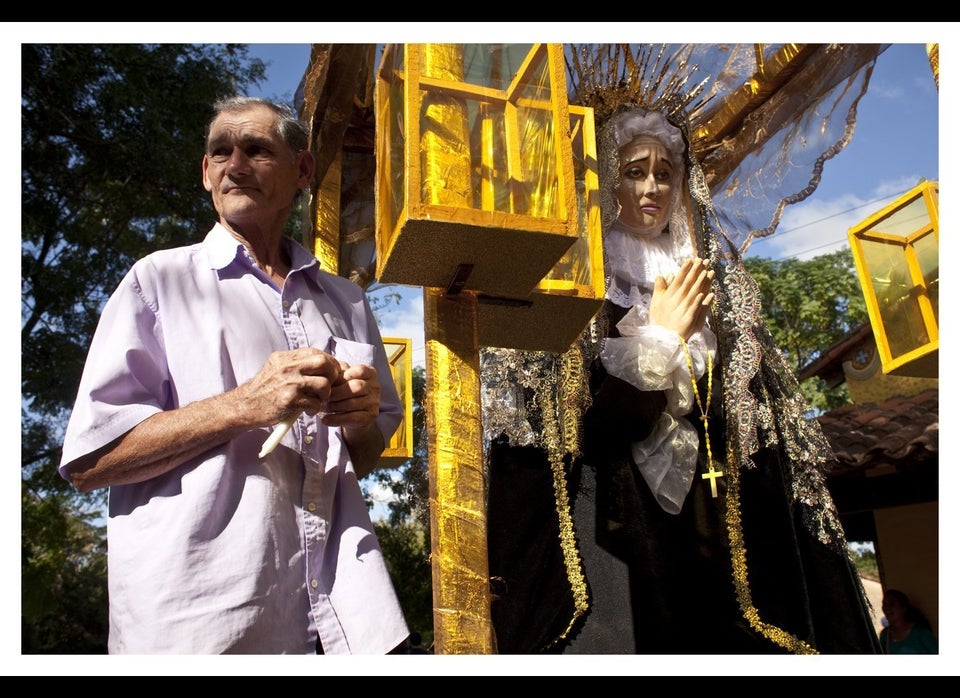"I don't even know anybody who has ever been to Paraguay!" exclaimed a Colombian friend when I mentioned to him that I had just visited the South American country a few weeks prior.
My friend is not alone in dismissing "The Other Guay." This tiny, land-locked country, surrounded by much more influential and well-known neighbors, Brazil and Argentina, is utterly overlooked.
One distinct characteristic of Paraguay is the native population, the Guaraní. Regarded as inferior, superstitious and even cannibalistic during colonial reigns, the Guaraní, along with their language and traditions, have become a point of national pride for modern Paraguayans. Walking the streets of the capital, Asunción, one will not only notice walls covered with graffiti in Guaraní and catch the distinct, slightly nasal language at almost every corner.
In fact, though only five percent of the population belong to the indigenous peoples, an estimated 90% of the population speaks Guaraní, making Paraguay the only country in the Americas whose majority speaks a native language.
Guaraní culture is ancient. Long before the 16th century, when the Spanish colonial empire conquered the land that is now Paraguay, the Guaraní were living in nomadic communes, passing down their language and beliefs by word of mouth. Since then, their amusing, preposterous and at times frightening myths have been believed, told and re-told all over Paraguay--until this day. Snakes with parrot heads, running trees and a man with a penis so long that he literally needs to tie it around his waist.
The most notorious among them all is a mythical, humanoid creature called Pombero. Mostly active in rural Paraguay, this short, hairy and incredibly ugly imp is said to create all kinds of mischief, including stealing eggs, scaring cattle and impregnating women by running between their legs. The only way to appease him is a sacrifice of tobacco and liquor. Under the city's electric lights, these stories are shared and laughed at over drinks with friends and family, but on the country side, away from the safety of urban globalization, staring into the pitch black night can easily convince you to leave a bunch of cigarettes and booze out on the window sill--just in case.
As time (and Jesuits missionaries) passed in Paraguay, animistic mythology was replaced with
Jesus Christ. Today, 97% of Paraguay's population identifies as Christian. It will not come as a
surprise then that one of Paraguay's most significant holidays is Easter. Asunción's streets lay
practically deserted, as most Paraguayans travel to the countryside to visit family and friends.
Semana Santa, the Holy Week, is largely spent baking and consuming enormous amounts of chipa, a bagel-shaped pastry made of corn flour and cheese, among other traditional foods.
Paraguay's largest Easter celebration takes place in Tañarandy, a small traditional village located in the municipality where the Jesuits built their first mission. Every year, on Good Friday, the town's dusty red streets attract thousands of visitors from Paraguay and around the world. In the glow of a sea of candles and torches, they follow a procession, carrying the Virgin Mary to the other side of town where living paintings commemorate the stations of Jesus' crucifixion. Over the years, the procession of lights has become a all-out tourist attraction: Visitors can pick up rosaries and icons alongside cotton candy and neon plastic toys on their way out of Tañarandy. But for two humbling hours, one is lost in the sacred chants of a long-lived tradition.
-- Christina Gossmann
PHOTOS BY SAM WOLSON
